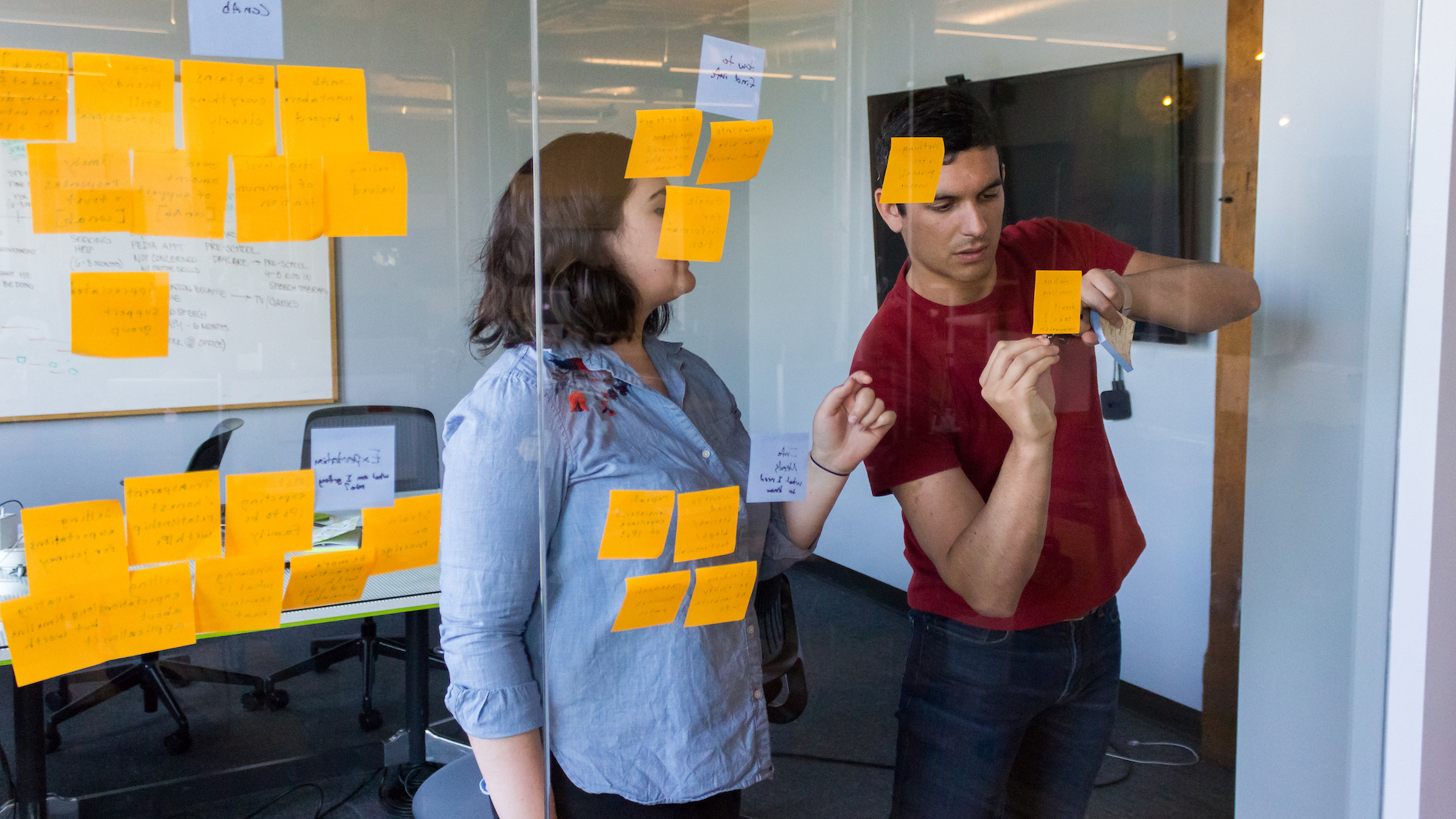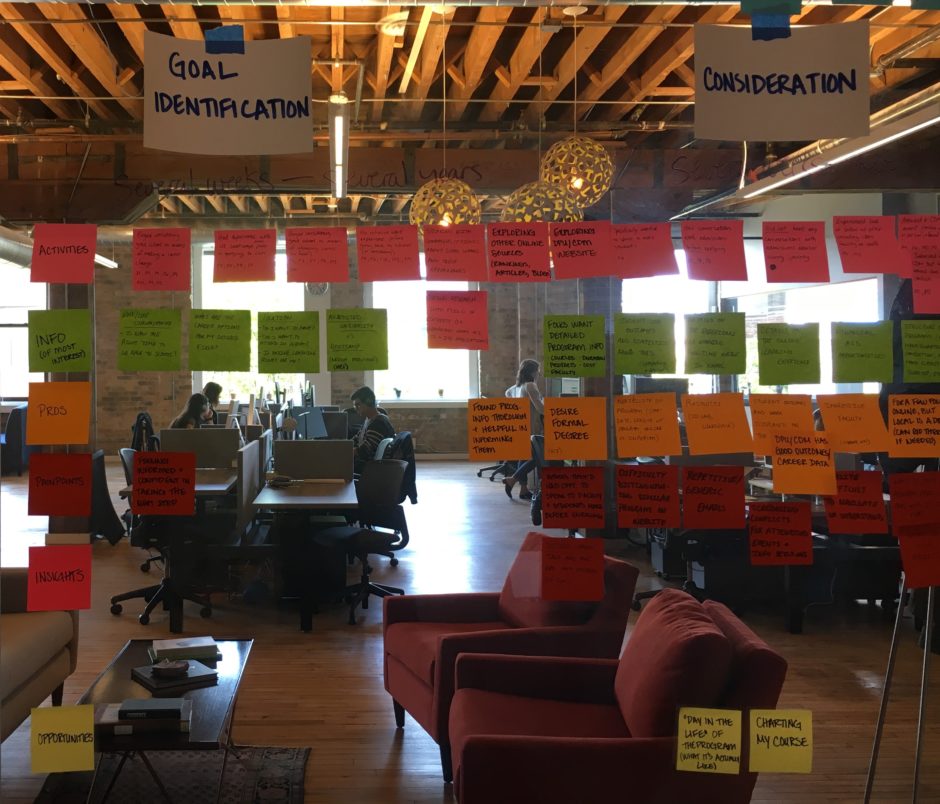
User experience testing can be a long process. At Fuzzy Math, designers carry out the testing process as well as the design process, so one of our first steps when conducting tests is to define our objectives—what are we trying to find out? Then we can recruit and schedule test participants and write testing materials. When the time comes to carry out the testing with real users, we might be traveling to their workplaces or homes or we may need to set up a suitable testing environment in our office.
After the testing sessions, generally any designers or other team members involved get together to discuss the testing results and go over any ideas that are top of mind. Testing synthesis is when we take all the data we’ve gathered and break it down into something discernible. This can often be the most active—and most stressful—part of the testing process.
User experience testing can be daunting but the following 8 tips can help you navigate the process from start to finish.
1. Prepare for UX testing carefully
Setting up your testing session is a very meaningful first step. It’s helpful to keep track of it in a couple of different ways, including:
- the logistics of how the test should be run
- how you plan to measure what you’ll learn
- what you want to gain from the testing
For those designers without a lot of testing experience, it can be intimidating to try and put together a testing guide or even to just prepare yourself mentally for the task of running a session. We’ve put together some tips for impactful usability testing that can help you get started.
2. Recruit user experience testing participants wisely
After the initial plans, you can begin identifying participants. Ideally, you will test with real users. Clients will often provide some guidance for who they think can provide you with helpful feedback. Other times designers make that decision based on who we believe would be the ideal participants. Respondent is also a helpful tool for recruiting test participants that some Fuzzy Mathers have used in testing past projects.
3. Frame your UX research objectives
Think about what problems you are trying to solve as you frame your UX research and testing objectives. You may be conducting testing using an interview guide or testing script. In either case the questions you write should get at the variety of topics you want insight into. It’s also important to consider the kind of data you expect to receive and what you plan to do with it.
For instance, if your user experience testing consists of a survey, will it be totally quantitative or will you include some open-response questions? If you do an in-person testing session, how will you synthesize the written or recorded data? Will you use the testing results to make recommendations for a solution to your client or will you be implementing that solution as well?
You’ll want to know the answers to these questions before you begin speaking with users. It’s important to have the framework in mind so that the testing informs on the objectives.
Read More: How to Conduct User Interviews with Tips and Tricks from Experts
4. Avoid biases
As a researcher, you should be concerned with avoiding bias in your testing questions as well as your approach in asking them. You might have certain assumptions about how your participants will respond that need to be checked at the door—don’t let these judgements cloud your process! Think of a testing session as a conversation with your user during which you act as their guide. They are only trying to do what you ask.
A testing session is a chance for you to learn the “right way” to use the product or service from the perspective of the users. Users will approach it in whatever way makes the most sense to them. Don’t let your greater goals or expectations for the project affect how you take in information during testing. It would probably be helpful to read up on common cognitive biases in user experience testing to know what to look out for in your own practice.
5. Ask the right questions about user experience
Knowing how and when to ask the right questions is part of the process of conducting testing and it’s a skill you have to develop over time. You want to get a sense of what questions to include in your testing script which explicitly guide you toward the answers you’re seeking. But what questions you ask is only the first part. It’s also important how you ask questions of your users. Consider how the questions are phrased and whether certain participants should be asked certain questions. Try to ask open-ended questions, the kind that your participants will feel inclined to respond to openly. There’s a lot that designers can learn from journalists in the art of asking engaging interview questions.
6. Be empathetic
User testing can be emotional for both you and your test participants. If nothing else, it is time-consuming and requires quite a bit of mental energy. Depending on the type of testing you’re doing, participants may be looking at a wireframe of a new end product that is different than what they’re used to. It’s a vulnerable state to be in. Participants don’t want to feel “in the hot seat” but they also want to give valuable responses and avoid making mistakes.
From your perspective, you may be preoccupied about what the output of the testing will be and whether it will match your assumptions. This is the time to keep empathy in mind and remember that outside of your goals or personal thoughts you are just a person speaking with another person.
7. Document UX testing thoroughly
Document your testing through multiple channels. You’ll want to take notes for every testing session you conduct and it’s a good idea to put those notes in one file. It will make it easier later when you need to search through them. It may also help to have a “fact sheet” about your participants so you can get a better understanding of the group as a whole. These sorts of things are also helpful for noting any major findings from the work done with the participant. Don’t feel the need to limit yourself to just digital documents. It can be helpful to create physical affinity maps out of Post-Its, diagrams on whiteboards, or even paper sketches to organize your information and define insights.

It’s probably possible to have too many documents from testing but it is good to have a handful of especially useful ones. A tip here is to start breaking down the data you gather as early as possible. This can be as simple as scheduling a debrief with your team after completing a session. Discuss interesting or important observations, and track initial insights. It may not be possible to dive in too deeply if you have several more tests to conduct with other users, but it will at least lighten your load to start early.
8. Refer back to UX documents
You may be moving on to the design phase after wrapping up testing. Reference back to your documentation! It’s funny how often designers can forget to look back on the insights gathered during testing to inform future design decisions. It’s always helpful to check any initial gut reactions against the testing findings. It helps assure that your conclusions are data-supported. Also, you didn’t do all that hard work for nothing, so make sure your efforts don’t just sit in a folder somewhere!
Takeaways
User testing can be a tough part of the design process but hopefully these tips make it easier. These are just a few of the things you want to try and consider while you do testing, but there are plenty of others as well. The challenge of testing can be a lot less daunting if you know what to look out for and how to design effective tests. More than anything else, it’s important to understand that user experience testing can’t be taught overnight. It takes practice to refine your process and craft—so a final tip is to get as much UX testing experience as you can!
Interested in learning more about your users? We can help.
